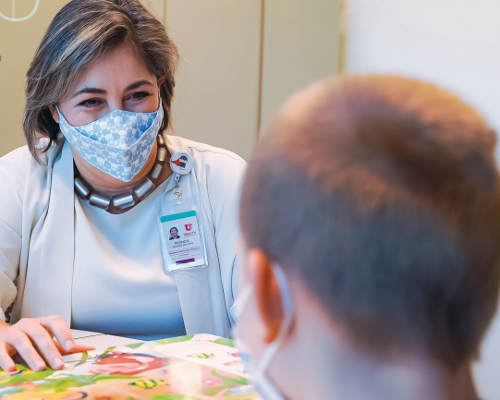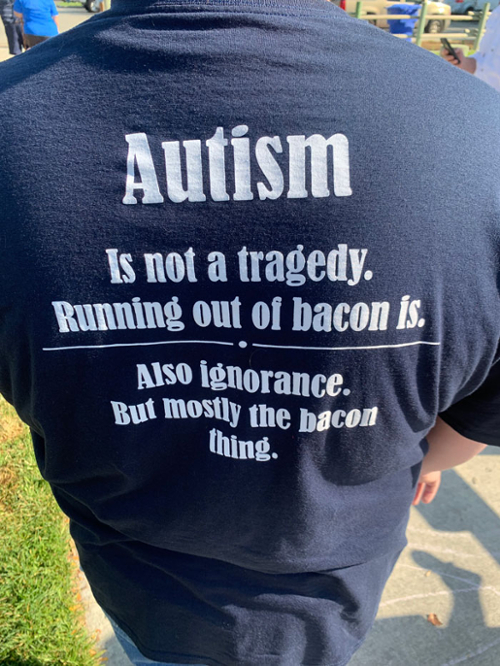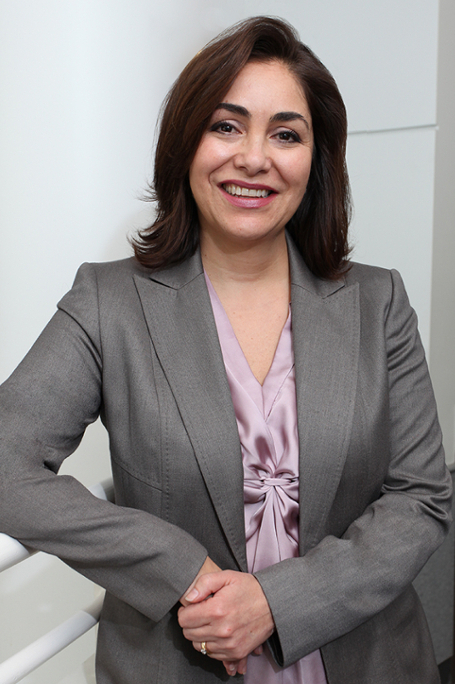Voices of U of U Health
“Medical Home” Model of Care for Complex Medical and Mental Health Needs

Imagine raising four young children on your own, three of them with autism. This is the challenge facing a current patient of mine. Cassie, who was recently diagnosed with a form of autism herself, has been associated with our program for almost five years now. She is handling her family’s issues with courage and determination—and with the support of her HOME team!
HOME refers to “Healthy Outcomes Medical Excellence” as well as a “medical home” model of care. The people we take care of in the Neurobehavior HOME program have a variety of complex medical and developmental disabilities. They are often neglected and end up falling through the cracks, especially when it comes to health care.
HOME is a unique program established by the University of Utah Departments of Psychiatry and Pediatrics in partnership with the state of Utah and with start-up funding from the Robert Wood Johnson Foundation. HOME, which falls under the umbrella of the Huntsman Mental Health Institute, is a great program for people with autism, Down syndrome, and other cognitive or developmental disorders because it provides integrated care to meet both medical and mental health needs. Our patients can be treated and monitored throughout their lives by our health care team, which takes the time and effort to really get to know them and develop solid, long-lasting relationships built on familiarity and trust.
Cost Savings Across the Board
It was typical for patients like Cassie and her children to go to the ER or urgent care centers frequently to seek medical or mental health attention. Of course, unnecessary visits like these drive up medical costs and require precious staff time. By referring these patients to HOME and keeping them out of the hospital, the costs to our health care system and the entire state are greatly reduced. It’s a win-win situation for patients and their families, health care providers, and the community as a whole. We’ve worked hard to make HOME a financially viable program.
A Life-Saver for Patients and Families
Our patients often have underlying medical problems such as seizures, diabetes, and cardiac or respiratory issues. Additionally, the majority of our patients struggle with psychiatric problems. This is why we assign each person a team of their own, often comprised of a pediatrician or primary care doctor, psychiatrist, case manager, occupational therapist, and behaviorist.

“This has been a godsend for us,” Cassie says. “Being able to go to one place and see all the medical professionals we need is super convenient and helpful. It gives me tremendous peace of mind and confidence about my family’s well-being.”
A case manager is responsible for overseeing and coordinating treatment for each patient, ensuring they get the services they need. Case managers coordinate communication among team members and can solve issues or direct patients to resources they need. They act as a hub for those involved in each patient’s life to work toward common goals. Case managers often involve schools, therapists, and other community partners to ensure everyone’s efforts are coordinated.
HOME is available 24/7 to respond immediately to any medical, mental, or behavioral health concerns or crises.
Continuity and Quality Care
The fact that our patients receive all of their health care under one roof with one team ensures continuity and quality they won’t get elsewhere. Once they are assigned a “team,” they don’t need to worry about aging out or changing providers as they get older. We realize that change can be particularly difficult for those with developmental disabilities, so we make a special effort to maintain continuity in their lives.
Another aspect of the HOME program that patients and families really appreciate is that we serve as the insurer (Health Maintenance Organization) as well as the care provider. All of our patients receive Medicaid benefits that we administer, so they don’t have to worry about billing or financial matters.
Expanding Access
Currently, HOME serves about 1,400 people in the Salt Lake area. We want to expand to other regions of the state, especially rural areas, where there is so little access to quality, comprehensive health care.
Patients can be referred to the HOME program by their doctors, families, schools, group homes, or community organizations. They may self-refer, as well. Anyone with an intellectual/ developmental disability who has Medicaid qualifies for the program. The first step for anyone interested in becoming a HOME patient is to work with the state of Utah to complete an application. Once approved, the individual and family members or caregivers will meet with their assigned HOME team.
“When we moved to Utah from South Carolina about five years ago, we were so fortunate to hear about the HOME Program,” Cassie recalls. “The wonderful people there have helped us feel like we’re valued members of the community.”
Stanford Case Study
We were pleased to have a case study conducted by the Stanford Medicine Clinical Excellence Research Center in 2021. Their findings reinforced our mission to optimize quality of life for our patients by providing excellent and compassionate integrated health services throughout their life span.
